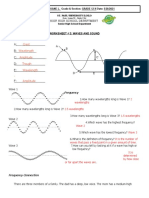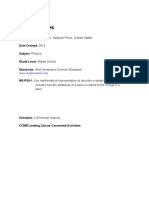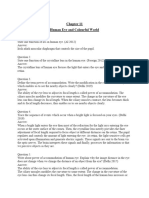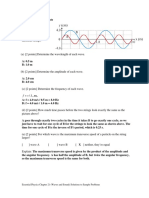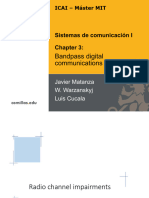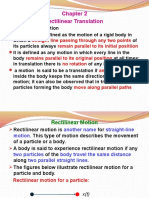0% found this document useful (0 votes)
59 views6 pagesVisualizing Sound Waves Lab
The Visualizing Sound Waves Lab involves experimenting with sound waves using online tools to observe the differences between high and low-pitch sounds, including their frequency, wavelength, and amplitude. Students are instructed to draw and compare sound waves, and to explore the characteristics of loud and soft sounds. The lab encourages predictions about the functionality of noise-canceling headphones based on the understanding of sound wave behavior.
Uploaded by
ashliaimran08Copyright
© © All Rights Reserved
We take content rights seriously. If you suspect this is your content, claim it here.
Available Formats
Download as PDF, TXT or read online on Scribd
0% found this document useful (0 votes)
59 views6 pagesVisualizing Sound Waves Lab
The Visualizing Sound Waves Lab involves experimenting with sound waves using online tools to observe the differences between high and low-pitch sounds, including their frequency, wavelength, and amplitude. Students are instructed to draw and compare sound waves, and to explore the characteristics of loud and soft sounds. The lab encourages predictions about the functionality of noise-canceling headphones based on the understanding of sound wave behavior.
Uploaded by
ashliaimran08Copyright
© © All Rights Reserved
We take content rights seriously. If you suspect this is your content, claim it here.
Available Formats
Download as PDF, TXT or read online on Scribd
/ 6









